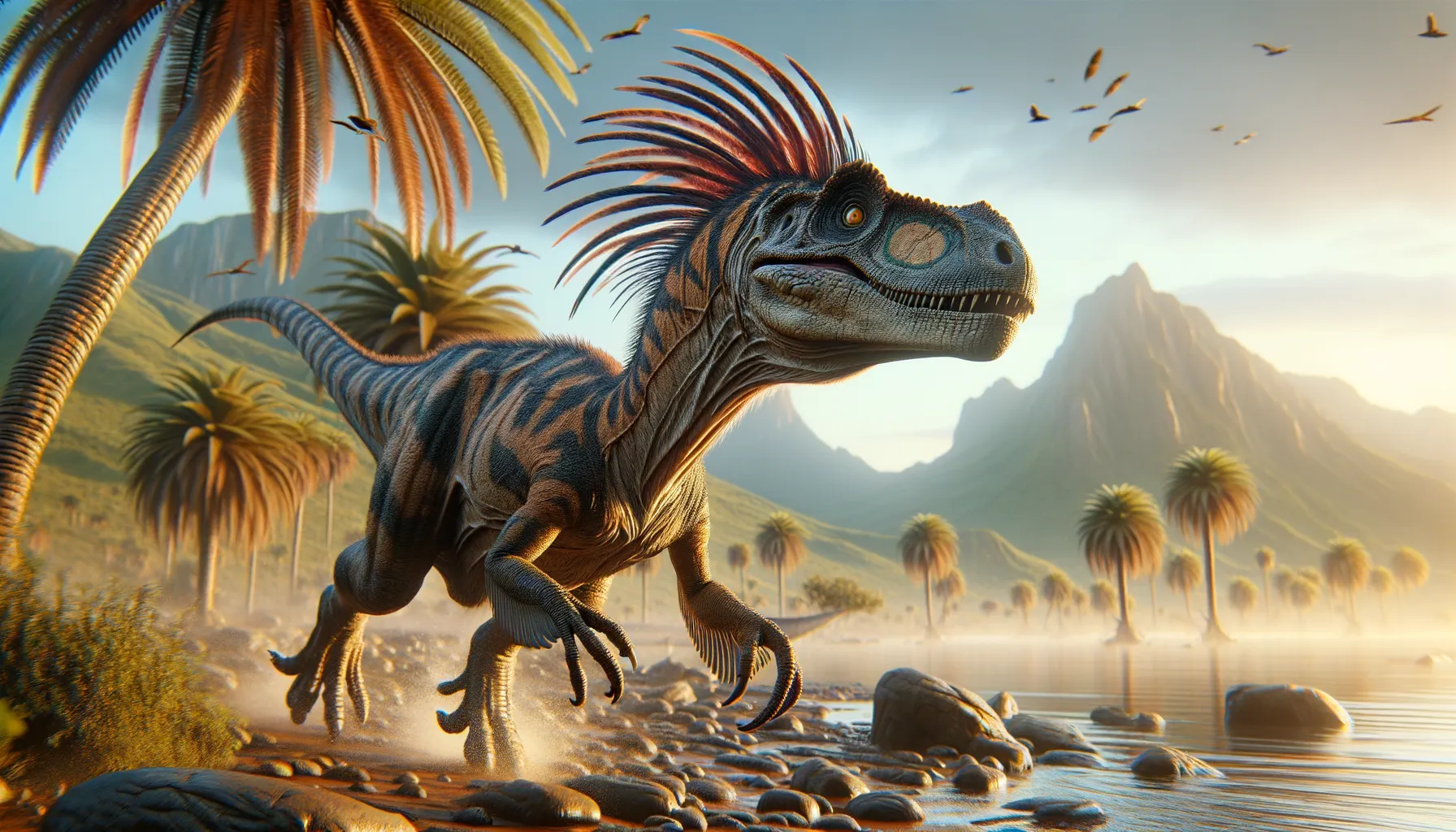
Zanabazar
Agile hunter of the ancient world.
Period
Cretaceous
Length
About 2.3 meters long.
Height
Around 1 meter tall.
Weight
Approximately 25 kilograms.
Zanabazar was a small, swift dinosaur that roamed the Late Cretaceous period in what is now Asia. Known as a theropod, it shared similarities with modern birds, suggesting a highly active lifestyle. Its large eyes indicate it might have been a keen hunter, relying on sight and agility to catch prey. As a member of the troodontid family, it has contributed significantly to our understanding of small predatory dinosaurs and their behaviors.
Diet
Zanabazar was likely an omnivore, feeding on small animals and possibly plants. Its diet would have included small reptiles, mammals, and insects, which it could catch with its nimble movements.
Hunting
Zanabazar may have hunted alone or in small groups, using its speed and agility to ambush prey. Its large eyes suggest it hunted primarily using sight, possibly even in low light conditions.
Environmental challenges
Zanabazar lived in a time of shifting climates, which may have affected its food sources. Competition for resources with other species might have been a constant challenge. Its small size made it vulnerable to larger predators, requiring constant vigilance to avoid becoming prey.
Speed
Relatively fast for its size, agile.
Lifespan
Possibly 10 to 20 years.
First discovery
First discovered in Mongolia in the 1970s.
Fun Facts
- Zanabazar was a type of dinosaur known as a troodontid, which means it was closely related to birds.
- It lived during the Late Cretaceous period, around 70 million years ago, in what is now Mongolia.
- Zanabazar is named after a prominent historical figure, Zanabazar, who was a spiritual leader and artist in Mongolia.
- This dinosaur was relatively small, with an estimated length of about 2 to 2.5 meters, making it smaller than many other dinosaurs.
- Zanabazar had keen senses and a large brain for its size, suggesting it was quite intelligent.
- Its teeth were serrated, indicating it likely had an omnivorous diet and could eat a variety of foods.
- The original fossil discovery of Zanabazar included a well-preserved skull, which helped scientists learn much about its features.
Growth and Development
Zanabazar likely grew rapidly to reach maturity quickly, a trait common among small theropods. This fast growth rate would help it evade predators and compete for food more effectively. Fossil evidence suggests it went through several growth stages, indicated by changes in bone structure.
Habitat
Its habitat was diverse, ranging from open plains to forested areas which provided ample cover. The shifting climate might have fostered areas with seasonal changes, requiring Zanabazar to adapt to different environments. It likely sought out habitats that offered abundant prey and vegetation.
Interaction with other species
Zanabazar shared its environment with a variety of other dinosaur species, from herbivores to other small carnivores. Competition for resources would have been fierce, particularly for small prey items. It may have had to navigate complex social interactions both within its own species and with others.
Natural lifespan
In the wild, its natural lifespan might have been curtailed by predation and environmental factors.
Reproduction
Like many dinosaurs, Zanabazar likely laid eggs in nests, possibly in secluded or hidden areas to protect them from predators. Hatchlings would have been vulnerable and required the ability to fend for themselves quickly. Parental care, if any, would have been limited.
Social behaviour
Zanabazar may have lived in small groups or pairs, facilitating cooperative hunting or protection. Social structures might have included communication through vocalizations or visual signals. Due to its size, staying in groups could have provided defense against predators.
Fossil locations
Zanabazar fossils have been primarily found in the Gobi Desert region of Mongolia. These locations provide a glimpse into the prehistoric ecosystems of Central Asia. The discovery of its fossils has been key to understanding the distribution of small theropods during the Late Cretaceous.
